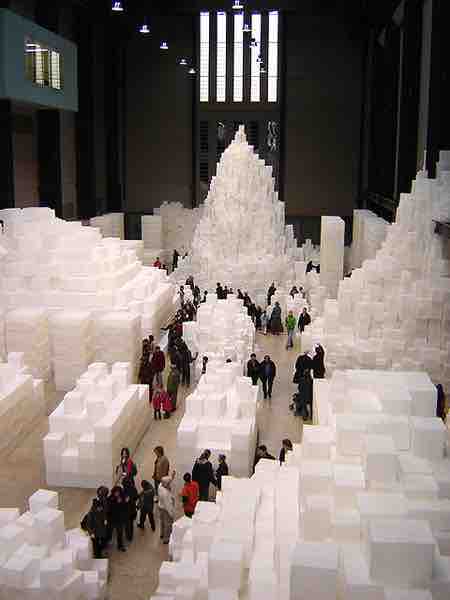The inclusion of the five human senses in a single work takes place most often in installation and performance-based art. In addition, works that strive to include all senses at once generally make use of some form of interactivity, as the sense of taste clearly must involve the participation of the viewer. Historically, this attention to all senses was reserved to ritual and ceremony. In contemporary art, it is quite common for work to cater to the senses of sight, touch, and hearing, while somewhat less common for art to address the senses of smell and taste.
The German word "Gesamtkunstwerk," meaning "total work of art," refers to a genre of artwork that attempts to address all five human senses. The concept was brought to prominence by the German opera composer Richard Wagner in 1849. Wagner staged an opera that sought to unite the art forms, which he felt had become overly disparate. Wagner's operas paid great attention to every detail in order to achieve a state of total artistic immersion. "Gesamkunstwerk" is now an accepted English term relating to aesthetics, but has evolved from Wagner's definition to mean the inclusion of the five senses in art.
Installation art is a genre of three-dimensional artwork that is designed to transform the viewer's perception of a space. Embankment by Rachel Whiteread exemplifies this type of transformation. The term generally pertains to an interior space, while Land Art typically refers to an outdoor space, though there is some overlap between these terms. The Fluxus movement of the 1960s is key to the development of installation and performance art as mediums.

Rachel Whiteread, Embankment, 2005
Whiteread's installation Embankment is a type of art designed to transform the viewer's perception of space.
"Virtual reality" is a term that refers to computer-simulated environments. Currently, most virtual reality environments are visual experiences, but some simulations include additional sensory information. Immersive virtual reality has developed in recent years with the improvement of technology and is increasingly addressing the five senses within a virtual realm. Artists have been exploring the possibilities of these simulated and virtual realities with the expansion of the discipline of cyberarts, though what constitutes cyberart continues to be up for debate. Environments such as the virtual world of Second Life are generally accepted, but whether or not video games should be considered art remains undecided.